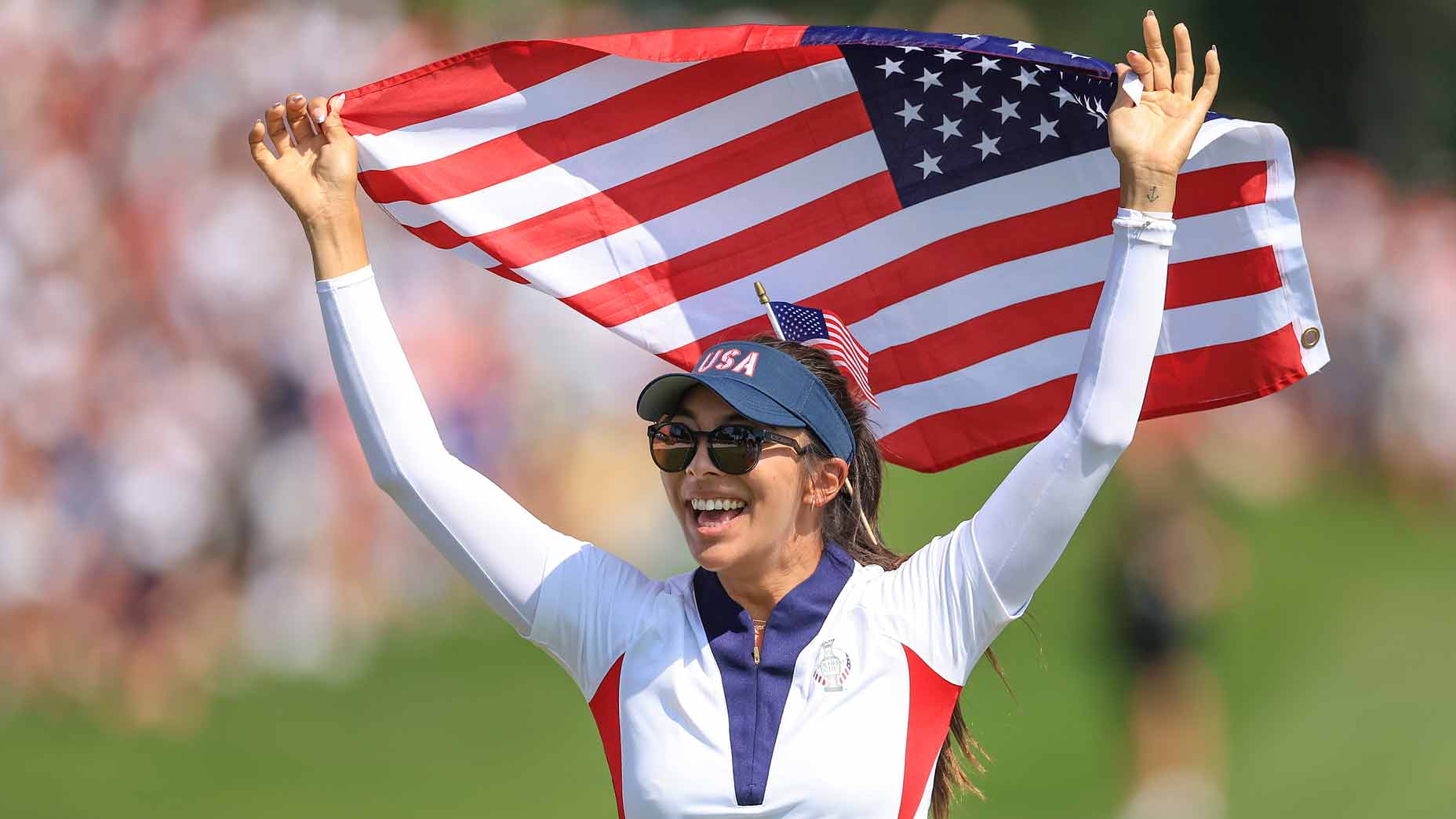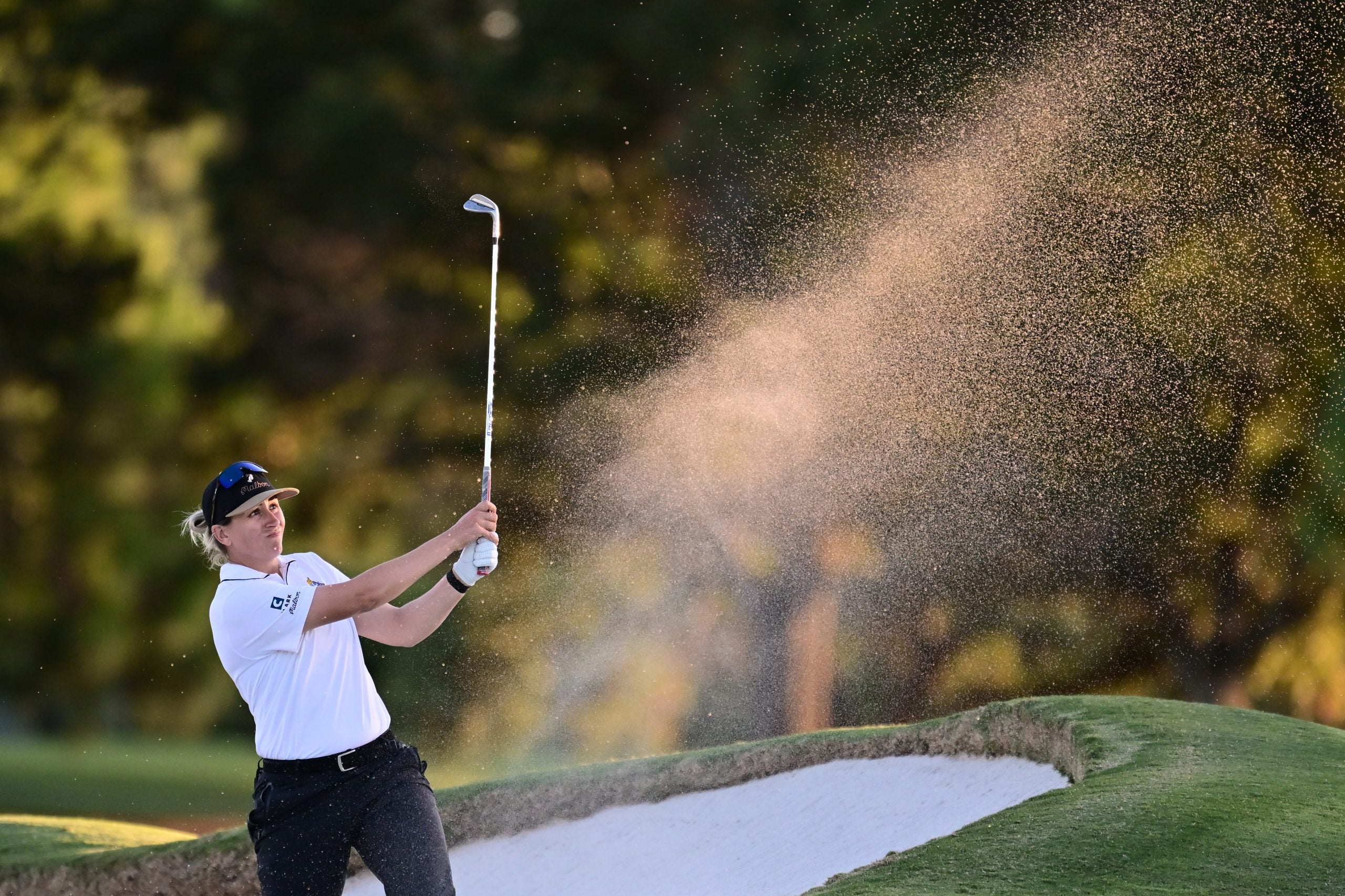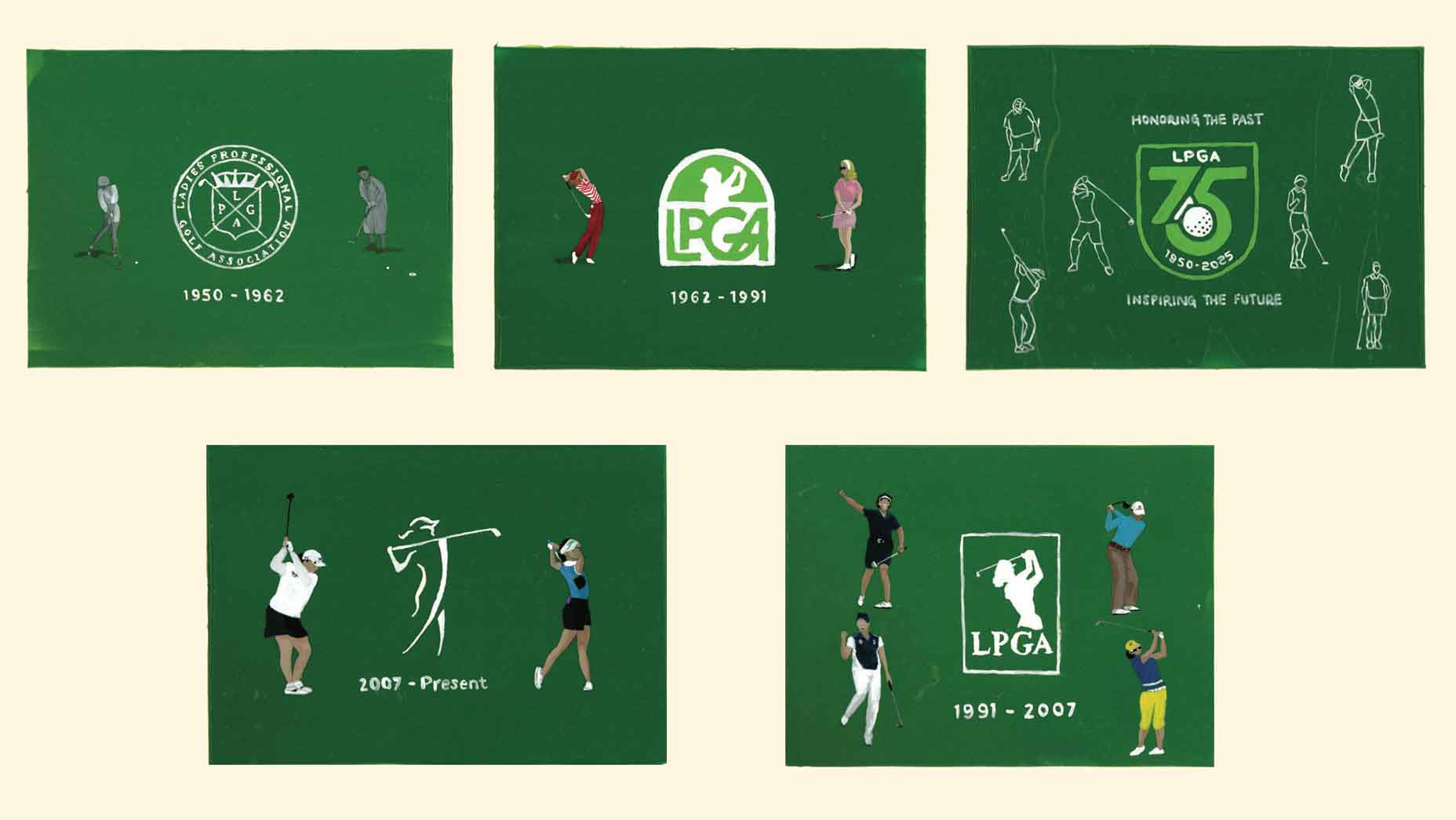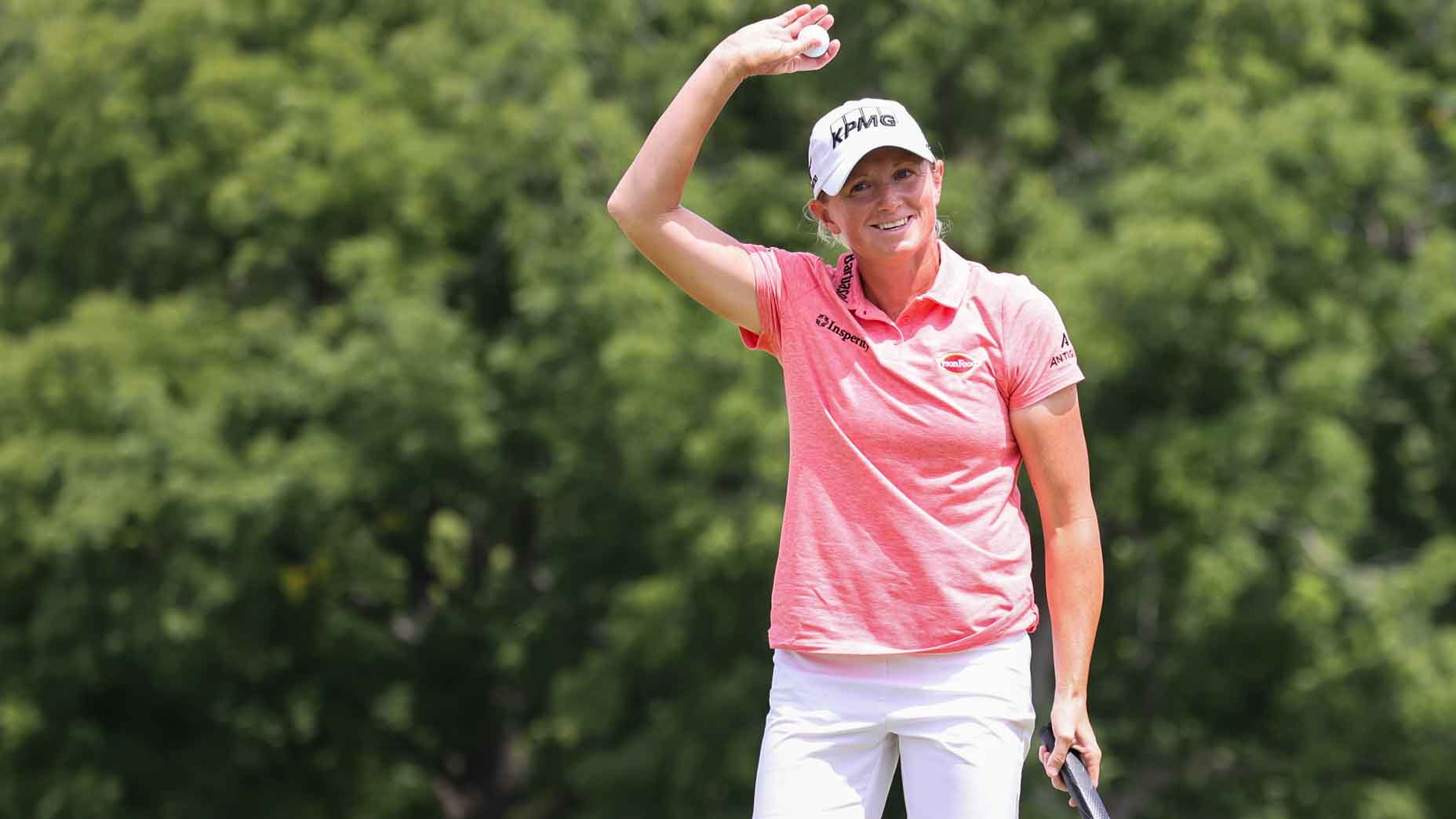GAINESVILLE, Va. — Entering Sunday singles at Robert Trent Jones Golf Club, the U.S. team looked like it was on its way to a stress-free Solheim Cup-winning Sunday. With a 10-6 lead — and dominant performances from their biggest stars — it felt like a matter of when, not if, the Americans would earn the winning point.
Yet as the latter half of the 12 singles matches played the back nine, the Europeans had stolen back all the momentum. Europe’s chances of retaining the Cup were still slim, but with blue flooding the leaderboard, there was hope for the visiting team.
You could sense the anxiety creeping into the American psyche. Nelly Korda stood just off the 16th green and nervously checked her phone every few minutes. Alison Lee sat on a chair behind the 17th green with an American flag draped over her knees and quietly chatted with her teammates about how the matches needed to finish for an American win. Lexi Thompson, likely playing in her final Solheim Cup, choked back tears after losing 1 down to Celine Boutier.
That angst was relieved only when Lilia Vu, playing in the third-to-last match of the day, cozied her final approach within two feet of the cup on the 18th green, effectively clinching the Cup for the Americans.
“I looked at the leaderboard, saw we had 14 points, and like Stacy [Lewis] said at the beginning of the week, half points matter,” Vu said. “I only had one goal: get it close and get that birdie.”
The victorious U.S. team stormed the green, waving the stars and stripes as they mobbed Vu and her caddie. It had been seven long years since they last hoisted the Cup. Seven years of heartbreak and tears. Seven years of coming up just short.
This is what catharsis looks like.
The U.S.’s winning moment was not born overnight. The journey to that 18th green celebration had begun more than two years ago, when Lewis was named the American captain. Her initial appointment was just for the 2023 match, but with just one year between the 18th and 19th editions of the event (a trickle-down effect from Covid-19 postponements and cancelations), Lewis was tapped for back-to-back captaincies.
Lewis wasted no time shaping her strategy. She poured herself into the job, researching tirelessly in hopes of concocting a winning formula.
“I started doing research and reading, including [Shane Ryan’s] book about the Ryder Cup at Whistling Straits,” Lewis told GOLF.com. “It talked a lot about analytics — what the guys do, the two different [analytics firms] the teams used. So we did meetings with both of them.”
Compared to the men’s game, the top tier of the women’s game lags far behind when it comes to analytics. Strokes-gained data (in the form of the KPMG Performance Insights platform) has been available on the LPGA only since 2021, and all the data is manually tracked by caddies. For that reason, there hadn’t been much reliance on advanced analytics in Solheim Cups past. Lewis sought to change that.
The U.S. team eventually partnered with KPMG (one of Lewis’ longtime sponsors) to utilize the KPMG Performance Insights platform to provide high-level insights. They also brought on data guru Justin Ray, who serves as the KPMG Performance Insights lead data analyst, in an advisory role. Lewis called Ray a “huge asset,” adding, “He’s been a great friend, and he loves his stats but he loves golf, and he loves watching this team compete.”
With this team in place, there would be no more relying on gut feelings and hunches to determine pairings. Every decision would be backed by data.
The U.S. won the foursomes sessions in Spain 5-3 and continued its dominance at RTJ Club with a 6-2 edge. For the first time in the history of the event, the Americans had won alternate shot in two straight Solheim Cups.
With Lewis leading the team, what was once a clear weakness had become an overwhelming strength. And in the U.S.’s quest to reclaim the Cup, this shift in tactics proved to be the difference.

The back nine of Robert Trent Jones Golf Club winds along the shore of Lake Manassas. It provides stunning visuals and has a many natural amphitheaters for prime viewing. For the U.S., this finishing stretch was not just a beautiful setting to put red on the board, but was also crucial run of holes that proved key for their foursomes dominance.
If you look at the scorecards in those matches, you’ll see a distinct pattern emerge. The American foursomes teams were relatively quiet on the front nine, either falling behind or holding serve. When they reached the back nine, though, they shifted gears.
The U.S.’s back-nine dominance is not a coincidence. Lewis and her analytics team identified that stretch — specifically holes 10 through 14 — as a part of the course on which they believed they could assert their dominance.
“There’s a six-hole stretch there on the back nine, kind of that 10 through 14, 15 stretch, I don’t even know what it is — but there’s six holes in a row that you would be hitting the birdie putts,” Lewis said. “So we kind of put that as our focus on putting our better putters on the odds. It allowed us to really take advantage of that part of the golf course, and that’s really what our alternates pairings were set up for.”
With the best putters teeing off on the odd holes, the early portion of the back nine became a feasting ground for the Americans. During the two foursomes sessions on that pivotal stretch, the Americans won 26 holes, compared to just 12 for the Europeans.
“It’s been a really important stretch,” Lewis said. “And I think it showed mostly in alternates.”
Lewis’ numbers-heavy approach stood in stark contrast to her European counterpart, Suzann Pettersen. For as analytical as the Americans were, the Euro captain was equally reliant on feels.
“Does it look like I’m a number person?” Pettersen said. “It’s probably the biggest difference between Stacy and I.”
Despite the foursomes beatdown in two consecutive Cups, Pettersen refused to second-guess her approach. Her instincts were an instrumental asset in her playing career, when she won two major titles, and she brought that same mentality to the team room.
The approach had earned Pettersen’s team a tie and retention of the Cup in Spain, but on American soil, Lewis’ strategy prevailed.
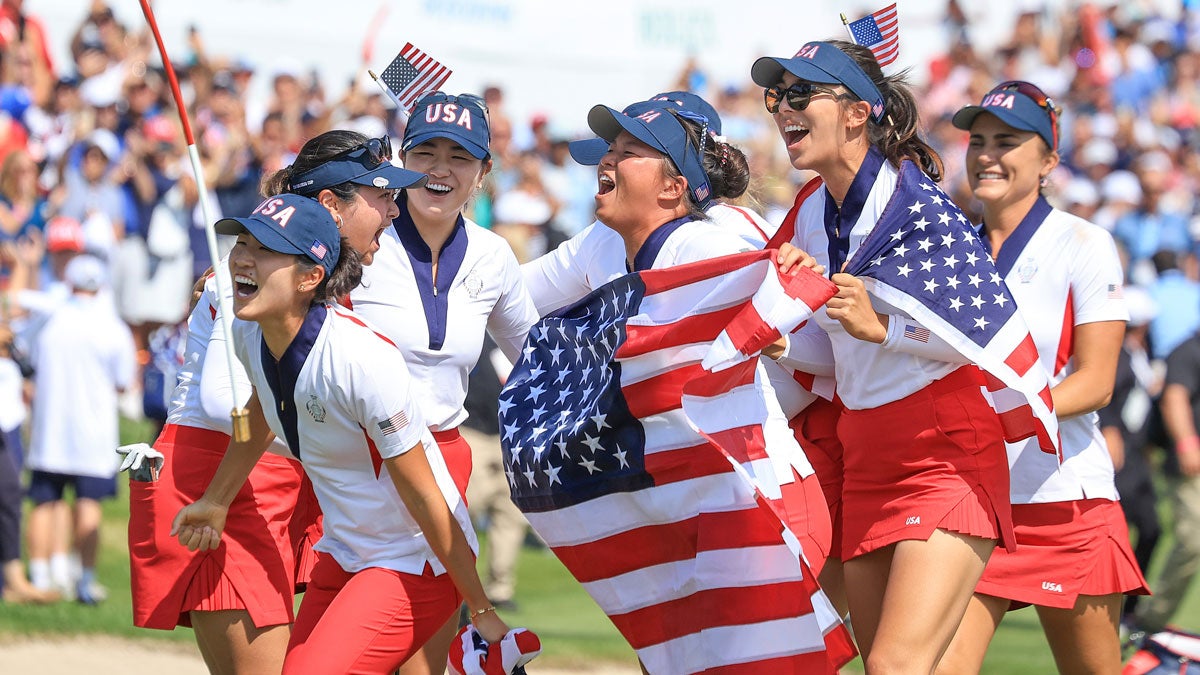
Although the final margin of this Solheim Cup read 15.5-12.5, for much of Sunday afternoon, the result felt uncertain. If one or two holes had gone differently, it may well have been the Europeans who were celebrating.
“That was the longest hour and a half of my life, I’m not going to lie,” Lewis said of watching the last several matches. “Just really nerve-racking. You felt pretty helpless.”
The U.S. dominated the first two sessions of the competition, building a 6-2 lead that was the largest Day 1 lead in the event’s history. But from that point forward, the Europeans played better golf. Over the final three sessions, they outscored the Americans 10.5 to 9.5.
But the Europeans’ comeback bid did not come to fruition. In a battle of wits and guts, the former reigned supreme.
“I’m just so proud of them,” Lewis said.
The same could be said of how the players feel about their captain.
